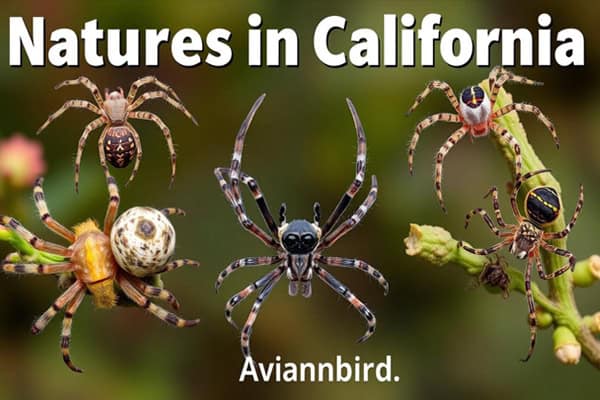5 Types of Doves in Illinois (With Pictures)
Doves are a common sight across the landscapes of Illinois, bringing a sense of peace and beauty to our surroundings. Whether you’re an avid birdwatcher or just someone who enjoys the soothing cooing sounds from your backyard, doves have a special charm that captivates many. From the graceful Mourning Dove to the striking White-winged Dove, these birds display unique characteristics that make them fascinating subjects for observation.
If you’ve ever wondered about the different types of doves fluttering around your neighborhood or local parks in Illinois, you’re not alone. With various species inhabiting this region, each brings its own flair to our skies. In this post, we’ll explore four captivating types of doves found in Illinois and share some stunning pictures to help you identify them on your next outdoor adventure. Get ready to take flight into the world of doves!
Common Doves Found in Illinois
- Mourning Dove
- Eurasian Collared-Dove
- Rock Pigeon
- White-winged Dove
1. Mourning Dove
- Scientific Name: Zenaida macroura
- Size: 24–30 cm (9.1–11.8 in)
- Weight: 110–170 g (3.9–6.0 oz)
- Lifespan: 1–3 years (up to 8 years in the wild)
- Diet: Seeds and fruits
The Mourning Dove is one of the most common doves found in Illinois. Known for its soft, mournful cooing, this bird brings a sense of calm to many outdoor spaces. It has a slender body and long tail feathers that enhance its graceful appearance.
Mourning Doves can be recognized by their light grayish-brown plumage. Their wings feature a subtle iridescent sheen, especially visible when they catch the sunlight just right. This beauty allows them to blend into various environments like gardens, parks, and farmlands.
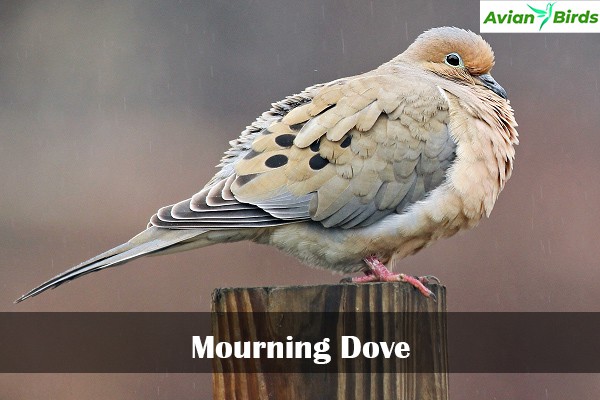
These birds are often seen perched on telephone wires or feeding on the ground. They primarily consume seeds but will also enjoy berries and grains when available. Their adaptability makes them resilient in changing habitats.
Unlike some other dove species, Mourning Doves are known for their distinctive flight patterns; they take off quickly with sharp bursts of speed before gliding gracefully to land again. This unique behavior captivates birdwatchers across Illinois.
During mating season, males perform an intricate courtship display that includes puffing up their chests and cooing softly to attract females. These charming rituals add another layer of intrigue to observing these beautiful doves in nature.
2. Eurasian Collared-Dove
- Scientific Name: Streptopelia decaocto
- Size: 30–33 cm (11.8–13 in)
- Weight: 120–250 g (4.2–8.8 oz)
- Lifespan: 4–19 years
- Diet: Seeds, grains, and fruits
The Eurasian Collared-Dove is a striking bird that has made its way into the hearts of many in Illinois. With its distinctive gray feathers and a black “collar” on the back of its neck, this dove stands out among other species. Its gentle cooing call adds to its charm, creating a soft backdrop for those peaceful moments outdoors.
Originally from Europe and Asia, this dove was first spotted in North America in the 1980s. Since then, Aslo has rapidly expanded its range across the continent. You can often find them perched on telephone wires or foraging for seeds beneath feeders.
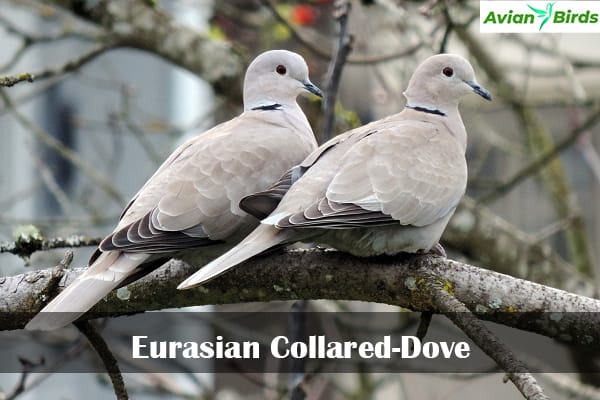
These birds are quite adaptable and thrive in urban areas as well as rural settings. They prefer open habitats with nearby trees or structures where they can roost comfortably. Their ability to live close to humans makes them a common sight around towns and cities.
Breeding occurs from spring through summer, leading to an increase in their population during these months. Nesting typically takes place in shrubs or trees but may also be found on ledges near human dwellings.
If you’re keen on spotting these doves, keep your eyes peeled while walking through parks or neighborhoods—Eurasian Collared-Doves are becoming increasingly familiar sights throughout Illinois.
Doves in other Regions:
3. Rock Pigeon
- Scientific Name: Columba livia
- Size: 32–37 cm (12.6–14.6 in)
- Weight: 240–380 g (8.5–13.4 oz)
- Lifespan: 3–5 years (up to 15 years in captivity)
- Diet: Seeds, fruits, and human food scraps
The Rock Pigeon, often just called the pigeon, is a common sight in urban areas across Illinois. These birds are known for their adaptability and can thrive in various environments. From city streets to parks, they have made themselves at home alongside humans.
With their sleek bodies and iridescent necks, Rock Pigeons boast a range of colors including gray, blue, and even brownish hues. Their distinctive two black bars on each wing make them easily recognizable. They may seem ordinary at first glance, but they exhibit a fascinating array of behaviors that capture birdwatchers’ attention.
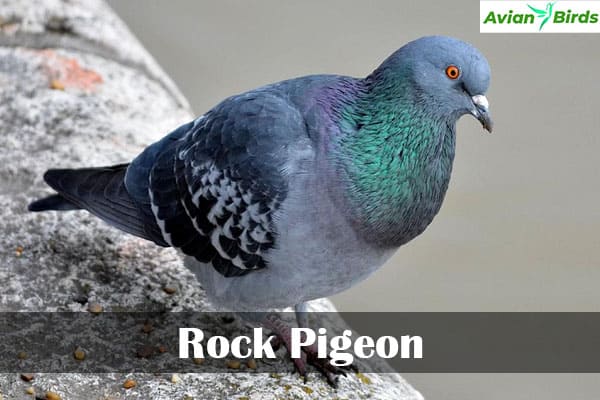
These pigeons primarily feed on seeds but will also munch on fruits and vegetables when available. Their strong beaks allow them to crack open tougher materials with ease. This dietary flexibility helps them survive in diverse conditions.
Rock Pigeons are social creatures that prefer to live in large flocks. You’ll often see them gathered together pecking at the ground or perched atop buildings and statues. They communicate through coos and various body movements which convey different messages among flock members.
Reproduction is another interesting aspect of their life cycle; they typically mate for life and build nests in hidden spots like ledges or under bridges for safety from predators.
4. White-winged Dove
- Scientific Name: Zenaida asiatica
- Size: 25–30 cm (9.8–11.8 in)
- Weight: 120–150 g (4.2–5.3 oz)
- Lifespan: 1–3 years (up to 10 years in the wild)
- Diet: Seeds, fruits, and berries
These doves are known for their soft cooing sounds, which create a pleasant ambiance in the areas they inhabit. They often gather in flocks and can be seen perched on telephone wires or foraging on the ground for seeds and fruits. Their social nature makes them quite engaging to observe.
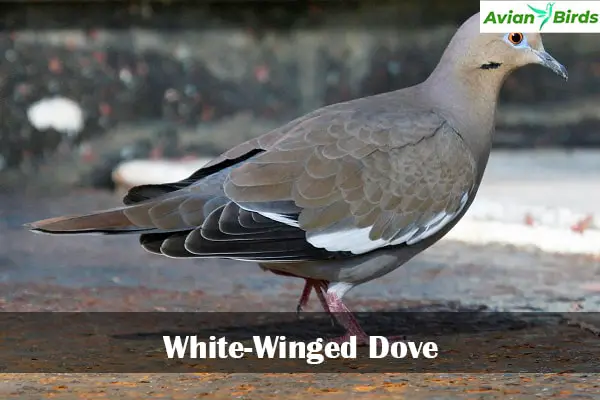
White-winged Doves prefer open habitats like urban areas with plenty of trees or parks where they can find food sources easily. During spring and summer, you may notice them nesting in higher branches to avoid predators while raising their young.
When it comes to feeding habits, these birds have adapted well to human environments. They are commonly found at bird feeders munching on sunflower seeds or other offerings from backyard enthusiasts.
Identifying the White-winged Dove becomes easier when you catch sight of those unmistakable wing markings during flight—a true delight for any birdwatcher exploring doves in Illinois!
5. Ringed Turtle-Dove
- Scientific Name: Streptopelia risoria
- Size: 30–34 cm (12–13 inches) in length
- Weight: 120–170 grams (4.2–6 oz)
- Lifespan: 10–15 years in the wild; up to 20 years in captivity
- Diet: Seeds, grains, berries, and small fruits
The Ringed Turtle-Dove is a beautiful bird often spotted in various regions, including Illinois. With its soft cooing calls and gentle demeanor, this dove adds charm to any environment it inhabits. It’s easily recognizable due to the distinctive black crescent-shaped markings on the back of its neck.
These doves are medium-sized, typically measuring around 12 to 14 inches long. Their plumage features shades of grayish-brown, providing excellent camouflage among trees and shrubs. The subtle elegance of their colors makes them a favorite among bird watchers and nature enthusiasts alike.
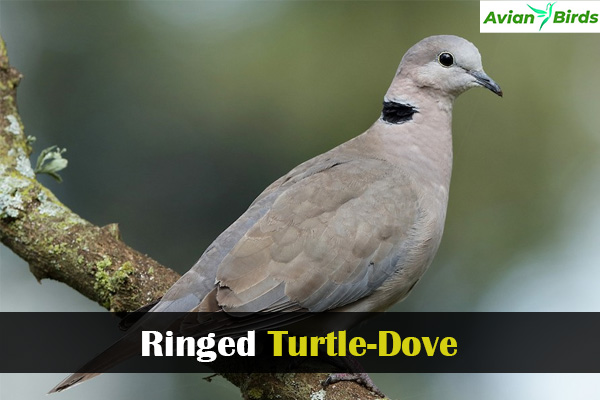
Ringed Turtle-Doves prefer open woodlands, parks, and gardens where they can forage for food comfortably. They mainly feed on seeds and grains but will also enjoy fruits if available. Their foraging habits help maintain local ecosystems by dispersing seeds as they move about.
You’ll often find these birds perched peacefully on tree branches or even near urban areas where food sources abound. Their calm presence brings a sense of tranquility wherever they go.
If you’re lucky enough to spot one in Illinois, take a moment to appreciate its gracefulness and unique beauty amidst the bustling landscape that surrounds it.
The Importance of Doves in Local Ecosystems
Doves are key players in local ecosystems, boosting biodiversity and ecological health. They help plants grow and come back to life by spreading seeds. This shows how doves keep their homes balanced.
They also play a big part in local food chains. Being eaten by different animals, they link different parts of the ecosystem together. Watching these interactions helps us understand nature better.
- Doves help spread seeds, which makes plants more diverse.
- They keep food webs stable by being food for other animals.
- Learning about dove behavior makes birdwatching more rewarding.
- Doves show us how healthy their habitats are by their presence.
Having doves around makes our outdoor time richer. When we watch birds, we learn about their important roles. Their impact goes beyond just watching; it connects us to the lively world of local wildlife.
Read More 🐦Related Articles:
| Black Birds In Florida |
| Owls in Arkansas |
| Hummingbirds in Florida |
| Doves in Michigan |
| Hummingbirds in Maryland |
Conclusion
Doves in Illinois are not just common birds; they bring a unique charm to the landscape. Each type has its own distinct characteristics, from the soft cooing of the Mourning Dove to the striking appearance of the White-winged Dove. The Eurasian Collared-Dove adds an exotic touch, while the Ringed Turtle-Dove captivates with its gentle presence.
Whether you’re an avid birdwatcher or simply enjoy observing wildlife, these doves can be found across various habitats in Illinois. Parks, gardens, and open fields provide ideal settings for spotting them. Their adaptability makes them a delightful addition to both urban and rural environments.
Next time you’re outdoors, take a moment to appreciate these beautiful creatures soaring through the sky or perched quietly on tree branches. Doves enrich our natural surroundings and remind us of nature’s wonders right here in Illinois. Keep your eyes peeled — you never know when you might catch sight of one!





